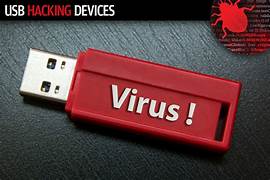Are You Worried About Having Your USB Device Hacked?
Introduction
USB (Universal Serial Bus) devices have become an essential part of modern digital life, used for data storage, file transfers, charging devices, and even running portable applications. However, despite their convenience, USB devices are highly vulnerable to hacking, malware infections, and data breaches. Cybercriminals exploit USB vulnerabilities to compromise personal data, corporate networks, and government systems.
This article explores how USB devices can be hacked, the risks involved, real-world cases of USB-based cyberattacks, and the best ways to protect yourself from USB-related threats.
1. How Can USB Devices Be Hacked?
USB hacking can occur in several ways, including malware infections, unauthorized data access, and firmware manipulations. Below are some of the most common techniques used by hackers:
A. USB Malware and Viruses
- Autorun Malware: Some USBs automatically execute malicious software once plugged into a device.
- Trojan Horses: These disguise themselves as legitimate files, tricking users into executing them.
- Keyloggers: Malicious USB devices can record keystrokes and steal passwords or sensitive data.
B. BadUSB Attack
- This attack manipulates the firmware of a USB device, allowing it to act as a keyboard or network adapter to install malware or steal data.
- Since firmware modifications are difficult to detect, even a factory-reset USB drive may still remain compromised.
C. USB Charging Station Attacks (Juice Jacking)
- Hackers can modify public charging stations to install spyware or extract data from connected devices.
- Unprotected USB ports can also allow malware to spread from a charging station to a user’s smartphone or laptop.
D. Data Theft and Unauthorized Access
- USB devices, if lost or stolen, can expose sensitive data, leading to identity theft or corporate espionage.
- Without encryption and password protection, USB storage devices are easy targets for data breaches.
2. Real-World Cases of USB-Based Cyberattacks
USB vulnerabilities have been exploited in major cyber incidents over the years:
A. Stuxnet (2010)
- One of the most infamous USB-based attacks, Stuxnet was a highly sophisticated cyberweapon developed to disrupt Iran’s nuclear program.
- The worm was spread through infected USB drives, eventually damaging industrial control systems and sabotaging nuclear centrifuges.
B. BadUSB Demonstration (2014)
- Security researchers proved that USB firmware can be hacked, turning a harmless USB device into a malicious tool capable of infecting an entire network.
- This discovery raised awareness about how firmware-based threats are almost undetectable by traditional antivirus software.
C. USB Keyloggers in Corporate Espionage
- Multiple companies have reported employees unknowingly plugging in compromised USB drives, leading to data theft, insider threats, and business losses.
3. The Risks of USB Hacking
USB-related cyberattacks pose serious risks to individuals and organizations:
- Data Loss and Theft: Personal files, financial records, and confidential corporate information can be stolen or erased.
- Network Breaches: A single infected USB can compromise an entire IT infrastructure, leading to widespread damage.
- Financial Losses: Businesses and individuals can suffer financial damage due to ransomware, fraud, and intellectual property theft.
- Reputation Damage: Companies losing customer data through USB breaches face severe backlash and loss of trust.
4. How to Protect Yourself from USB-Based Attacks
To mitigate USB-related threats, adopting proactive security measures is crucial. Below are some best practices:
A. Avoid Using Unknown or Untrusted USB Devices
- Never plug in USB drives from unknown sources, including free promotional USBs, found devices, or unverified vendors.
- Be cautious about USB drives shared in public places, as they could be bait for potential hacks.
B. Use USB Security Software
- Install endpoint security solutions that scan USB devices for malware before allowing access.
- Enable USB port control software to restrict unauthorized USB usage in corporate environments.
C. Encrypt and Password-Protect USB Devices
- Use hardware or software encryption to secure stored data.
- Enable password protection to prevent unauthorized access to sensitive information.
D. Disable USB Autorun and Firmware Manipulation
- Configure devices to disable autorun settings, preventing malware from executing automatically.
- Keep firmware updated to protect against exploits targeting outdated USB hardware.
E. Beware of Public USB Charging Stations
- Avoid using public charging ports at airports, hotels, or cafes unless using a USB data blocker (USB condom).
- Prefer charging with wall adapters instead of plugging directly into unknown USB ports.
5. The Future of USB Security
As cybersecurity threats evolve, companies and cybersecurity experts are working on improving USB security solutions:
- Next-Gen USB Security Protocols: Future USB standards may include built-in encryption and authentication mechanisms.
- Artificial Intelligence-Based Threat Detection: AI-powered tools can detect unusual USB activity and block potential threats.
- Zero Trust USB Access Policies: Organizations are adopting stricter controls over removable media, limiting access only to authorized personnel.
Conclusion
USB hacking is a serious threat, but with awareness and proactive security measures, users can protect their devices from potential cyberattacks. Whether through firmware manipulation, malware infections, or data theft, USB-based threats continue to pose risks in today’s digital landscape. By practicing safe USB usage, using security software, and staying informed about evolving threats, individuals and organizations can significantly reduce their vulnerability to USB-related cyber risks.


